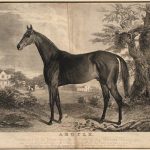Opinion: In Maryland, time to make a splash
When the De Francis Dash lost its graded status earlier this year, it made one thing very clear: the Maryland Jockey Club would be well advised to do something splashy to increase public attention on its racing product beyond Preakness weekend.
Four stakes that were linchpins of Maryland’s calendar — the De Francis, Pimlico Special, and this coming weekend’s Barbara Fritchie and General George — have all lost status in the last decade or so, a worrying development.
Fortunately, there’s a template for splash-making. You just have to look back 30 years or so when the company took two steps that did just that.
First, in 1988 under Frank De Francis, the company brought the Pimlico Special out of mothballs. The race most famous as the Seabiscuit-War Admiral match race in 1938 had been a regular stop for top handicap horses before disappearing after the 1958 running won by Vertex.
The 1988 renewal went to Bet Twice, and by the third year, 1990, the race was a Grade 1 and one of the country’s most important races.
Then in 1990, the company inaugurated the Frank J. De Francis Memorial Dash to honor the memory of the late MJC owner. By its third year it had attained graded status, and two years later Cherokee Run scored the first meaningful win of his Eclipse Award season at Laurel. Soon thereafter, it, too was a Grade 1.
These days, the Special, like the General George and Barbara Fritchie, which will be contested this weekend, is a modest Grade 3 event. The latter two had been Grade 2 races before being downgraded.
But they’re all doing better than the De Francis, which for 2022 lost its graded status altogether.
[De Francis Dash, Parx Dash lose graded status]The only Grade 1 race left on the calendar in Maryland is the Preakness, which makes for a lot of racing without much to anchor it.
What made the Special and De Francis different then? What did they offer then that they don’t now?
In a word: money.
- Delaware Park picks and analysis: July 11, 2025
 Racing returns to Delaware Park, and we return with Delaware Park picks and analysis for the track’s 88th racing season.
Racing returns to Delaware Park, and we return with Delaware Park picks and analysis for the track’s 88th racing season.
When the Special returned to the calendar in ’88, it offered a purse of $500,000. At the time, outside of the Breeders’ Cup, the only dirt routes for older horses with bigger purses were the Jockey Club Gold Cup, Santa Anita Handicap, Woodward, and Meadowlands Cup – all Grade 1 races.
And some Grade 1 contests – like the Whitney and Donn (now the Pegasus World Cup) – actually had much smaller purses than did the Special.
As a result, the Special almost immediately became a key stop for top handicap horses.
Similarly, when the De Francis was inaugurated, in 1990, the purse was $350,000. Other major sprint races – for example, current Grade 1s like the Carter, Vanderbilt, Forego, and Bing Crosby – all had far lower purses. Of that group, the Carter’s $150,000 purse was the highest, and it was less than half that on offer in the De Francis.
In fact, outside of the Breeders’ Cup Sprint, the De Francis was then the richest sprint in the nation.
By last year, the picture was considerably different. Literally dozens of dirt routes for older horses had higher purses than the Special’s listed purse of $250,000. And about a dozen dirt sprints for older runners had bigger purses than the De Francis, the purse of which was down to $200,000.
Does any of this matter?
Yes. Grade 1 races anchor event days. They attract top horses and horsemen; they give tracks a reason to reach the broader public.
For example, as a Grade 1, the De Francis anchored a day with more than $5 million in handle seven consecutive years starting in 2001. It’s been run as a Grade 3 or ungraded race since 2011; De Francis day handle has reached the $5 million mark just once in those 10 years.
The good news for the MJC is that the money is there – if the will is — to create another top-quality race or two. And it can be done without chewing up overnight purses.
Laurel and Pimlico are home to dozens of $100,000 stakes: 18 of them during the first four months of the year, plus two $125,000 contests.
- Argyle and Thoroughbred racing in the 1830s
 Connected to Supreme Court justices and governors, the Maryland-bred Argyle became one of the best horses of the 1830s. His story.
Connected to Supreme Court justices and governors, the Maryland-bred Argyle became one of the best horses of the 1830s. His story.
The same is true, more or less, year-round. In 2021, for example, the tracks also played host to 20 MATCH Series stakes, mostly $100,000 races, in a series that somehow managed to last more than seven months.
Local horsemen with the right horses love ‘em, but they don’t do much to move the meter in terms of fan or bettor attention. And that hurts the product in the long run.
By eliminating some of these hundred-granders – they could be replaced by open allowances or money allowances, which are common at some other tracks, such as Parx Racing, but rare as hen’s teeth in Maryland – or by reducing some of their purses, the Maryland Jockey Club could find literally hundreds of thousands of dollars.
The company could then redeploy that money to one, two, or a very small group of races which it believes could one day be Grade 1 races. Boost the purses of races like the De Francis, Pimlico Special, Laurel Futurity, or Selima, all formerly Grade 1 races, or even the BWI Turf Cup, which a few years back was thought to be the reincarnation of the Washington, DC International – make them more than competitive with other top races – and see what happens.
Since a lot more top-quality horses reside outside of Maryland – particularly in New York and Kentucky – than live here, Maryland’ll always have to try harder if it wants to attract them.
But the incentive, money, and history are all there. And there’s no time like the present to try.
LATEST NEWS















